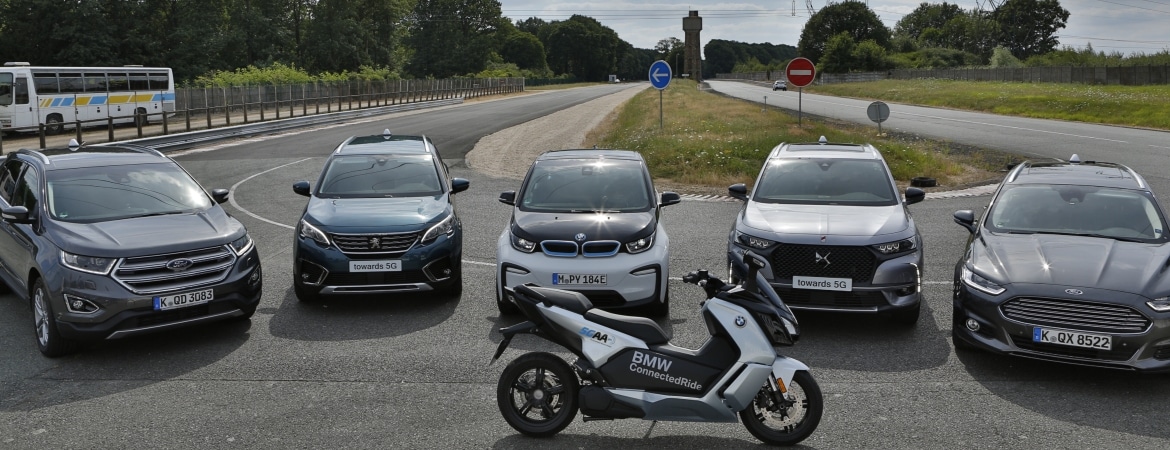
5GAA C-V2X Workshop and Demonstration Paris 2018
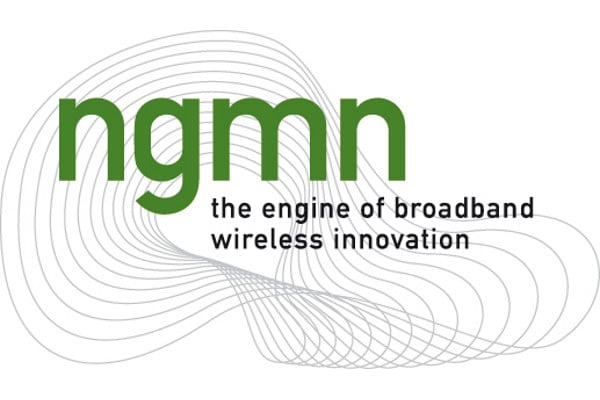
NGMN Publish white paper on V2X
The Next Generation Mobile Networks (NGMN) recently published a White Paper demonstrating their views on Vehicle-To-Everything (V2X) technologies as a key component to reduce the number of road accidents and enhance safety on our roads.
In the study, eight V2X use cases were chosen to reflect the three ITS application types: 1) road safety, 2) traffic management & efficiency and 3) infotainment. They encompassed various C-V2X communication methods such as Vehicle-To-Vehicle (V2V), Vehicle-To-Infrastructure (V2I), Vehicle-To-Pedestrian (V2P), Infrastructure-To-Vehicle (I2V), Vehicle-To-Network-To-Vehicle (V2N2V), and Network-To-Vehicle (N2V).
Here are some of the key findings and conclusions of the NGMN as highlighted in the paper:
- To date, NGMN members have provided cellular connectivity to more than 30 million vehicles worldwide which are used for a variety of safety-related use cases (e.g. distribution safety-related jam warning, black ice warnings, etc.). It is expected that in the near future every vehicle will be equipped with cellular connectivity. This is a good and market-driven basis for further deployment of further C-V2X technology and services.
- With the finalization of 3GPP Rel. 14 specifications at the beginning of 2017, NGMN members now have a 3GPP standardized solution, which supports both long-range as well short-range communication, and which fulfills all the requirements of a C-ITS eco-system.
- After already ongoing tests, the technology will be deployed by 2020.
- NGMN believes that C-V2X is not only able to enhance safety features for vehicles, but also supports use cases for other traffic participants, like pedestrians and cyclists.
- NGMN has investigated and concluded that C-V2X technology is superior to IEEE 802.11p standards, technically, economically, and eco-system wise, and can well satisfy the basic safety applications…
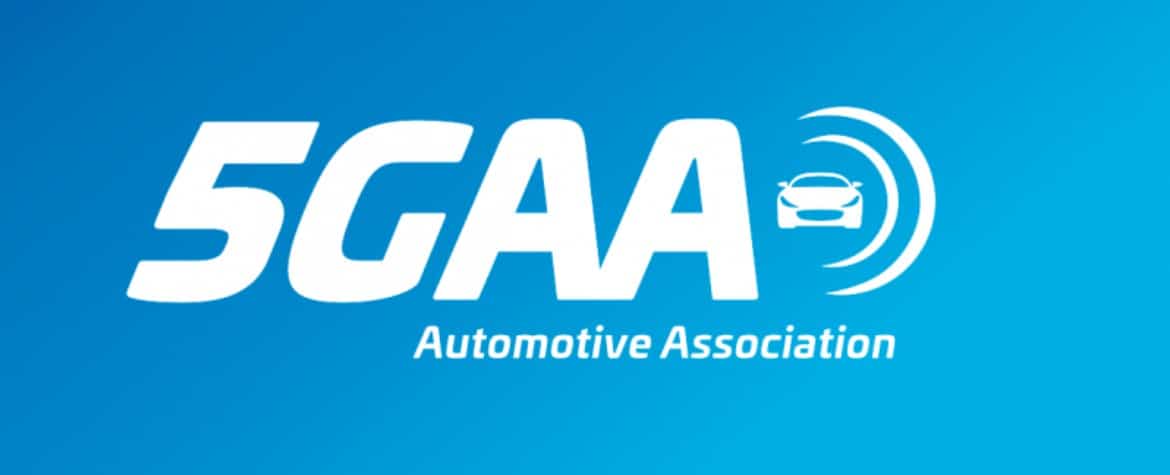
White Paper on ITS spectrum utilization in the Asia Pacific Region
With the booming development of intelligent transportation systems (ITS), an increasing number of regulators and governments around the globe pay attention to both technology and spectrum matters around ITS.
This white paper summarizes the status of ITS spectrum utilization in the Asia Pacific Region, with focus on Japan, Korea, Singapore, Australia and China. Based on the ITS developments in the region, including business development, spectrum allocation and policy, the white paper provides recommendations on the choice of technology for ITS. The white paper also provides recommendations on the spectrum allocated for ITS applications based on direct vehicle-to-everything (V2X) communications.
Read the full paper here.

5GAA, BMW Group, Ford and Groupe PSA Exhibit First European Demonstration of C-V2X Direct Communication Interoperability Between Multiple Automakers
- Companies team up with Qualcomm and Savari to showcase C-V2X’s advanced performance for safety, traffic efficiency, and autonomy
- Exhibition includes communication between vehicles, motorcycles, and infrastructure, showing commercial readiness for industry deployments as early as 2020
Downloadable Resources |
Photos |
Infographic |
Soundbite Video Clip |
PARIS — July 11, 2018 – The 5G Automotive Association (5GAA), the BMW Group, Ford Motor Company (NYSE: F), and Groupe PSA — in association with Qualcomm Technologies, Inc., a subsidiary of Qualcomm Incorporated, and Savari, Inc. — announced today Europe’s first live demonstration of C-V2X direct communication technology operating across vehicles from multiple auto manufacturers. The live demonstration also featured a live showcase of C-V2X direct communication technology operating between passenger cars, motorcycles, and roadside infrastructure. C-V2X is a global solution for vehicle-to-everything (V2X) communication in support of improved automotive safety, automated driving and traffic efficiency.
The demonstration exhibited the road safety and traffic efficiency benefits of using C-V2X for Vehicle-to-Vehicle (V2V) collision avoidance, as well as Vehicle-to-Infrastructure (V2I) connectivity to traffic signals and Traffic Management Centers (TMC). C-V2X was operated using real-time direct communications over ITS spectrum and demonstrated its ability to work without cellular network coverage, and underscores its commercial readiness for industry deployment as early as 2020. Superior performance and cost-effectiveness compared to other V2X technologies, along with forward-compatibility with 5G, make C-V2X direct communications a preferred solution for C-ITS applications.
Six demonstrations were shown including Emergency Electronic Brake Light, Intersection Collision Warning, Across Traffic Turn Collision Risk Warning, Slow Vehicle Warning and Stationary Vehicle Warning, Signal Phase and Timing / Signal Violation Warning and Vulnerable Road User (pedestrian) Warning. The vehicles involved included two-wheel e-scooters provided by BMW Group, and automotive passenger vehicles provided by Ford, Groupe PSA, and BMW Group, all of which were equipped with C-V2X direct communication technology using the Qualcomm® 9150 C-V2X chipset solution. V2X software stack and application software, along with roadside infrastructure, were provided by industry leader, Savari.
C-V2X is globally supported by a broad automotive ecosystem, which includes the fast growing 5GAA organization. The 5GAA involves over 90 global members comprised of many leading automakers, Tier-1 suppliers, software developers, mobile operators, semiconductor companies, test equipment vendors, telecom suppliers, traffic signal suppliers and road operators.
Cellular modems will be key to the C-V2X deployment in vehicles to support telematics, eCall, connected infotainment and delivering useful driving/traffic/parking information. As C-V2X direct communication functionality is integrated into the cellular modem, C-V2X solutions are expected to be more cost-efficient and economical over competing technologies, and benefit from accelerated attach rates. C-V2X direct communication field validations are currently underway in Germany, France, Korea, China, Japan and the U.S.
C-V2X currently stands as the only V2X technology based on globally recognized 3rd Generation Partnership Project (3GPP) specifications, with ongoing evolution designed to offer forward compatibility with 5G. C-V2X also leverages and reuses the upper layer protocols defined by the automotive industry, including the European Telecommunications Standards Institute (ETSI) organization. C-V2X includes two complementary transmission modes:
- Direct communication as shown in this demonstration for V2V and V2I use cases
- V2N network communication, which leverages mobile operators for connectivity and delivers cloud-based services, including automated crash notification (ACN, as mandated by eCall), hazard warnings, weather conditions, green light optimal speed advisory (GLOSA), parking spot location, and remote tele-operation to support automated driving, to name a few.
“This demonstration builds on the successful C-V2X showcase we organised with our members Audi, Ford and Qualcomm in Washington DC in April” said Christoph Voigt, Chairman of 5GAA.
“We are excited to witness the growing momentum behind this life-saving technology and to see our members working together to deploy C-V2X, and to make it hit the road as soon as possible.”
“The BMW Group introduced the first C-ITS use cases already in 2013 with the market introduction of the BMW i3. Today most of envisaged C-ITS use-cases are already institutionalized. With the implementation of C-V2X, the BMW Group accomplishes the last set of the puzzle with a practical path to C-ITS showing quick benefits,” said Christoph Grote, Senior Vice President Electronics, BMW Group.
“With its ability to safely and securely connect vehicles, along with its evolution into 5G, C-V2X is integral to Ford’s vision for future transportation in which all cars and infrastructure talk to each other,” said Thomas Lukaszewicz, Manager Automated Driving, Ford of Europe. “We are very encouraged by preliminary test results in Europe and elsewhere which support our belief that C-V2X direct communications has superior V2X communication capabilities.”
“We’re moving forward with seamless communication between cars and their environment for enhancing road safety, as well as our customers’ safety,” said Carla Gohin, Group PSA’s Vice President for Research and Advanced Engineering. “Following the first European C-V2X direct communications demonstration we hosted with Qualcomm Technologies last March, we’re pleased to work with leading automotive and technology companies today to highlight that C-V2X interoperability is a reality.”
“This demonstration of interoperability between multiple automakers is not only another milestone achieved towards C-V2X deployment but also further validates the commercial viability and global compatibility of C-V2X direct communications for connected vehicles,” said Enrico Salvatori, senior vice president & president, Qualcomm Europe, and MEA. “We look forward in continuing to work alongside leaders in the automotive industry, like the 5GAA, BMW Group, Ford, Groupe PSA and Savari, to help advance the automotive industry’s shift towards a safer, connected and more autonomous future.”
“As one of the V2X pioneers, our company is extremely pleased to continue to help enable the next step in the V2X revolution that we helped start back in 2008,” said Ravi Puvvala, CEO of Savari. “For the last year and a half, the Savari team has worked diligently alongside the dedicated C-V2X engineers in the 5GAA partnership. The resulting string of increasingly impressive demonstrations is continuing to convince the world that C-V2X will soon be deployed around the world.”
About 5GAA
The 5G Automotive Association (5GAA) is a global cross-industry organization of companies from the automotive, technology and telecommunications industries (ICT), working together to develop end-to-end solutions for future mobility and transportation services.
Created in 2016, the Association is comprised of over 90 members whose mission is to develop, test and promote communications solutions, initiate their standardization and accelerate their commercial availability and global market penetration, to address society’s connected mobility and road safety needs with applications such as automated driving, ubiquitous access to services and integration into smart city and intelligent transportation. For more information, visit 5GAA’s website, LinkedIn and Twitter pages.
About the BMW Group
With its four brands BMW, MINI, Rolls-Royce and BMW Motorrad, the BMW Group is the world’s leading premium manufacturer of automobiles and motorcycles and also provides premium financial and mobility services. The BMW Group production network comprises 30 production and assembly facilities in 14 countries; the company has a global sales network in more than 140 countries. In 2017, the BMW Group sold over 2,463,500 passenger vehicles and more than 164,000 motorcycles worldwide. The profit before tax in the financial year 2017 was € 10.655 billion on revenues amounting to € 98.678 billion. As of 31 December 2017, the BMW Group had a workforce of 129,932 employees. The success of the BMW Group has always been based on long-term thinking and responsible action. The company has therefore established ecological and social sustainability throughout the value chain, comprehensive product responsibility and a clear commitment to conserving resources as an integral part of its strategy.
Facebook: https://www.facebook.com/BMWGroup
Twitter: https://twitter.com/BMWGroup
YouTube: https://www.youtube.com/BMWGroupview
Google+: https://googleplus.bmwgroup.com
About Ford Motor Company
Ford Motor Company is a global company based in Dearborn, Michigan. The company designs, manufactures, markets and services a full line of Ford cars, trucks, SUVs, electrified vehicles and Lincoln luxury vehicles, provides financial services through Ford Motor Credit Company and is pursuing leadership positions in electrification, autonomous vehicles and mobility solutions. Ford employs approximately 202,000 people worldwide. For more information regarding Ford, its products and Ford Motor Credit Company, please visit www.corporate.ford.com.
About Groupe PSA
Groupe PSA designs unique automotive experiences and delivers mobility solutions to meet all customer expectations. The Group has five car brands, Peugeot, Citroën, DS, Opel and Vauxhall and provides a wide array of mobility and smart services under the Free2Move brand. Its ‘Push to Pass’ strategic plan represents a first step towards the achievement of the Group’s vision to be “a global carmaker with cutting-edge efficiency and a leading mobility provider sustaining lifetime customer relationships”. An early innovator in the field of autonomous and connected cars, Groupe PSA is also involved in financing activities through Banque PSA Finance and in automotive equipment via Faurecia. Find out more at groupe-psa.com/en
Media library: medialibrary.groupe-psa.com / @GroupePSA_EN
About Qualcomm
Qualcomm invents breakthrough technologies that transform how the world connects and communicates. When we connected the phone to the Internet, the mobile revolution was born. Today, our inventions are the foundation for life-changing products, experiences, and industries. As we lead the world to 5G, we envision this next big change in cellular technology spurring a new era of intelligent, connected devices and enabling new opportunities in connected cars, remote delivery of health care services, and the IoT — including smart cities, smart homes, and wearables. Qualcomm Incorporated includes our licensing business, QTL, and the vast majority of our patent portfolio. Qualcomm Technologies, Inc., a subsidiary of Qualcomm Incorporated, operates, along with its subsidiaries, all of our engineering, research and development functions, and all of our products and services businesses, including, the QCT semiconductor business. For more information, visit Qualcomm’s website, OnQ blog, Twitter and Facebook pages.
About Savari
Savari seeks to make the world’s roadways and vehicles automated and safer by deploying advanced wireless sensor technologies and software. Savari builds software and hardware sensor solutions for automotive car manufacturers, the automotive aftermarket and smart cities. The company pioneered V2X radio technology, which is crucial for vehicles to achieve Level 4 and Level 5 of automation. The technology allows vehicles to share data with other vehicles, traffic lights and smartphones. With more than 150 man-years of V2X learning and development and 15 million-plus miles per year of public testing, Savari is a leader in V2X technology. Savari is headquartered in Santa Clara, Calif., and has offices in Detroit, Mich., Munich, Germany, Seoul, Korea and Bengaluru, India. For more information, visit savari.net.
###
Qualcomm is a trademark of Qualcomm Incorporated, registered in the United States and other countries. Other product and brand names may be trademarks or registered trademarks of their respective owners.
Qualcomm 9150 C-V2X chipset is product of Qualcomm Technologies, Inc. and/or its subsidiaries
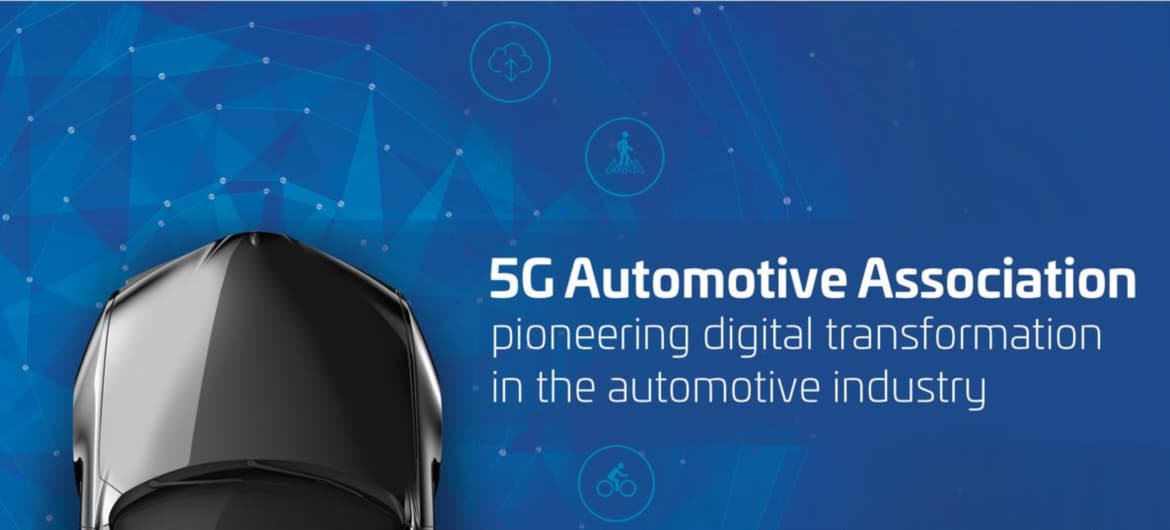
5GAA C-V2X Workshop and Demonstration
On 10 July in Paris, The 5G Automotive Association (5GAA) organised a Workshop with the support of PSA Groupe, Ford, BMW to present and showcase Cellular-Vehicle-to-Everything (C-V2X) technology to European transport stakeholders including EU Member States Ministries, Road Traffic Authorities & Road Operators, as well as a wide array of interest groups and industry representatives. The Workshop was followed by a Demonstration of C-V2X Direct Communication Interoperability Between Multiple Automakers (BMW Group, Ford, and Groupe PSA).
With the support of UTAC-CERAM, this interactive Workshop and Demonstration was intended to advance the dialogue between automakers, technology providers, mobile network operators and the overall transportation community on the capabilities, timeline and deployment models for Cooperative Intelligent Transport Systems (C-ITS) in Europe. This event also showcased the most recent developments and deployment initiatives around C-V2X, paving the way towards 5G for the uptake of Cooperative, Connected and Automated Mobility (CCAM).
The presentations made during the workshop are downloadable here below:
- 5GAA Opening – 5GAA
- The Automotive Value Proposition of Cellular-V2X – BMW Group
- Future-Proof Infrastructure: Planning & Executing Technology Transition – Commsignia
- Now, Near and Far: The Case For C-V2X – Ford Motor Company
- Why C-V2X: A Global OEM Perspective – PSA Groupe
- Leveraging Mobile Network Infrastructure for C-ITS – Orange
- Synergies in Connected Mobility of Tomorrow: C-V2X & Railways Case Study – SNCF
The presentations made during the demonstration are downloadable here below:
- 5GAA Opening – 5GAA
- C-V2X Direct Communications Multi-Vehicle Interoperability – PSA Group, BMW, Ford, Savari, Qualcomm

5GAA | Safety of Life Study
The aim of this study is to explore the impact of different technical solutions for Cooperative Intelligent Transport Systems (C-ITS) communication solutions on EU road safety over time. Three different communication solutions are assessed independently and consist of:
- Cellular vehicle-to-everything (C-V2X) communication based on the evolved LTE technology as defined by 3GPP (a global cellular specifications body), divided into two solutions:
- LTE-PC5: Communication solution that uses direct-mode communication between vehicles, road users and infrastructure operating in ITS bands (e.g. ITS 5.9 GHz) independent of cellular network;
- LTE-Uu (cellular): Network-based communications interface (Uu) operating in the traditional mobile broadband licensed spectrum;
- 802.11p a Wi-Fi technology that supports Vehicle-to-vehicle (V2V) and Vehicle-to-Infrastructure (V2I) communications based on IEEE 802.11p and uses direct-mode communication operating in the ITS band of 5.9 GHz.
 For the purpose of this study, LTE-PC5 and LTE-Uu will be modelled separately. However, it should be noted that these would likely co-exist. When assessing the results presented in this study, it should be considered that in reality, these two technical solutions could complement each other.
For the purpose of this study, LTE-PC5 and LTE-Uu will be modelled separately. However, it should be noted that these would likely co-exist. When assessing the results presented in this study, it should be considered that in reality, these two technical solutions could complement each other.
A key motivation for introducing C-ITS is the major potential to help improve road safety and decrease the number, as well as the severity, of accidents. For this study we have focused on two specific C-ITS use cases with high accident reduction potential that are on the European Commission’s list of priority C-ITS services. The selected services address vehicle-to-infrastructure (V2I) and pedestrian/cyclist to vehicle (V2P) communications:
- Red signal violation/intersection safety;
- Vulnerable Road User (VRU) protection.
The approach taken in this study separately models the penetration of new vehicles with C-ITS through built-in systems and that of additional equipment in existing vehicles through the driver’s smartphone (referred to as retrofitting).
We consider, as a baseline, the existing statistics of road traffic fatalities in the EU and then evaluate the potential reduction in the number of fatalities resulting from the deployment of each technical solution.
The modelling framework is kept in line with a previous 5GAA study and considers:
- The likelihood that any two ITS stations (vehicles, VRUs, roadside units (RSUs)) involved in a potential accident will be equipped with the same C-ITS communication solution.
- The fraction of fatalities which could be addressed and mitigated by the considered C-ITS communication solution.
- The likelihood that data transmitted from an ITS station via a given C-ITS communication solution is successfully communicated to its intended recipient.
- The effectiveness of a received alert/warning message inappropriately affecting the behaviour of the driver of a vehicle travelling towards a potential accident.
To account for the uncertainty in predicting the extent of future deployment and reliability of C-ITS technologies, we have developed “high” and “low” scenarios showing the sensitivity to key input parameters.
Main results:
The aggregated results for both use cases (without the additional benefit arising from retrofitting of C ITS services through apps on smartphones used in vehicles) illustrate that in the high scenario LTE-Uu shows the highest benefits in terms of the number of avoided fatalities and serious injuries. By 2040 the number of fatalities and serious injuries avoided through the use of the LTE-Uu solution reaches 114,066, compared to 90,380 for LTE-PC5. For the 802.11p solution, the values are significantly lower at 27,144 as VRU protection is not supported through smartphones, leading to a low level of VRU protection (where VRUs are expected be equipped with C-ITS technology through their smartphones). Research carried out for this study showed that the integration of 802.11p into smartphones is highly unlikely; thus, the penetration in smartphones for this technical solution was set to zero.
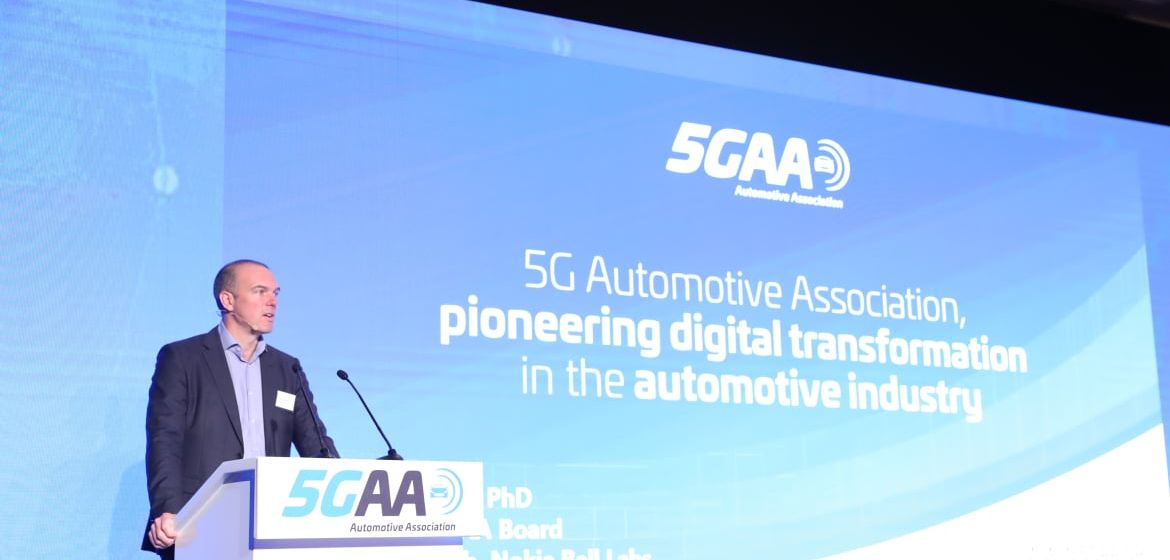
5GAA takes the stage at the MWC Shanghai 2018
On Thursday 28 June, the 5G Automotive Association organised a roundtable discussion with senior Chinese government officials and member companies from the automotive and the telecommunications industries.
More than 120 attendees joined the sessions and discovered the latest progress made in China and around the globe for the commercialisation of the Cellular-Vehicle-to-Everything (C-V2X) technology on roads.
Beyond discussing the accelerated launch of C-V2X, the roundtable provided a good platform to highlight the continuous support of 5GAA in the implementation of connected mobility with cellular-based technologies in China and worldwide.
The presentations made during the roundtable are downloadable here below:
- 5GAA Opening Speech – Thierry Klein
- Industry perspective and insights on C-V2X in China
- Global industry perspective:

5GAA Supports Accelerated Deployment of C-V2X in China at MWC Shanghai 2018
28 June, Shanghai, China – The 5G Automotive Association (5GAA), with the strong support of the telecommunications and automotive industries and senior Chinese government officials, presented the latest progress to deploy Cellular-Vehicle-To-Everything (C-V2X) on China’s roads, as well as across the globe, leading the efforts to deliver future connected mobility solutions. The discussion took place during a 5GAA roundtable at the Mobile World Congress in Shanghai.
China’s government officials support immediate deployment of C-V2X
China has been a trailblazer in adopting C-V2X, remaining at the global forefront of rolling out the technology. At the 5GAA “Connected Mobility in Action” roundtable, Ce Zhao, Director of High-Tech Department of Science & Technology Division of MIIT, delivered a keynote address on China’s strong commitment in ensuring the investment, testing, and development of C-V2X. Mr. Zhao announced China’s initial spectrum planning for LTE-based C-V2X in 5905~5925MHZ, and provided updates on the country’s national industry strategy, onsite testing, and deployment plan, as well as the country’s national level cooperation for C-V2X.
The Ministry of Transport’s (MOT) Vice Director of Research Institute of Highway, Mr. Lin Wang, also made a presentation providing updates on China’s intelligent highway progress, as well as test environments and scenarios.
Mr. Zhiqin Wang, Vice President of the China Academy of Information and Communications Technology (CAICT) and Chairman of IMT 2020 highlighted the fruitful progress on China’s standards, test framework and verification plan for C-V2X, stating, “Both standard and industry progress shows China’s readiness for full-scale deployment of C-V2X.”
Strong engagement from industry stakeholders as well
China’s industry stakeholders are also strongly committed to making C-V2X on roads a reality. Leading telecommunications and automotive companies in China are conducting product testing to prepare for the commercial deployment of C-V2X. With commercial chipsets ready to hit the road and various demonstration in the making this year, the path towards the deployment of C-V2X is imminent.
Dr. Dang Xiang, Deputy General Manager of Research and Advanced Technology Department at SAIC Motor and Alternate Board Member of 5GAA, presented during a keynote speech the latest industry advances for the deployment of the technology, including the current leading development of C-V2X and architecture of future mobility with the fusion of internet, transportation and vehicles based on C-V2X.
“SAIC Motor is currently transforming from the traditional OEM to the green smart mobility service provider. C-V2X is one of the key technologies to future mobility and SAIC Motor will cooperate with other C-V2X eco-system partners to accelerate the commercialization of C-V2X,” said Dr. Dang Xiang.
In addition to the progress made at a corporate level, companies such as SAIC Motor and China Mobile have been actively involved in 5GAA in developing the framework, required standards, and the business case for C-V2X and 5G future connected mobility services.
“China Mobile is proud to be part of the 5G Automotive Association. We are an active member of the association and strongly believe that by collaborating with the World’s largest Telecommunications and Automotive companies under the same roof, we will create solutions that will better address society’s transport needs and will help pave the way for a more connected mobility World,” said Gang Huang, Vice President of China Mobile Government and Enterprise Service Company.
Accelerating the deployment of C-V2X around the globe
C-V2X presents an unprecedented opportunity: the ability for vehicles to share real-time safety information and “communicate” with other vehicles, pedestrian, city infrastructure, and the networks will ultimately make transportation safer and more enjoyable.
5GAA member companies demonstrated the many benefits of C-V2X during an exciting panel discussion. The panel was comprised of: Julius Marchwicki, Director, Asia-Pacific, Connected Vehicles and Services at Ford Motor Company; Luke Ibbetson, Senior Director of Vodafone and member of the 5GAA Board; Thierry Klein, Head of Disruptive Innovation Program at Nokia Bell Labs and Vice Chair of the 5GAA Board; and Ed Tiedemann, SVP of Engineering, Qualcomm Technologies, Inc.
All panelists shared their views on the current challenges, opportunities, and next steps in the continued development of C-V2X in other regions such as Europe and North America. They also discussed how C-V2X and its evolution to 5G will play a critical role across the automotive and other industries.
Ed Tiedemann, SVP of Engineering, Qualcomm Technologies, Inc. discussed C-V2X trials in the US. He presented the C-V2X direct communication demonstration organised with 5GAA, Audi, Ford and Qualcomm Technologies this April in Washington D.C. The demonstration showcased the benefit of using C-V2X real-time direct communications for vehicle-to-vehicle (V2V) collision avoidance and vehicle-to-infrastructure (V2I) for improved road safety and traffic efficiency by using 3GPP Release 14 C-V2X direct communications and upper layers as developed by SAE to transmit messages in support of six use cases.
“C-V2X is ready for deployment: China is giving the green light, now it is up to the other regions to accelerate as well,” concluded the panel moderator, Dr. Maxime Flament, Chief Technology Officer of 5GAA.
5GAA provider of a platform for debate for key stakeholders
5GAA presence at this year’s MWC Shanghai last week was successful in outlining the association’s vision in being a global player in facilitating thought leadership platforms for relevant stakeholders driving towards building a better mobility ecosystem.
Join the connected mobility conversation on Twitter @5GAA_Official

5GAA @ Mobile World Congress Shanghai 2018
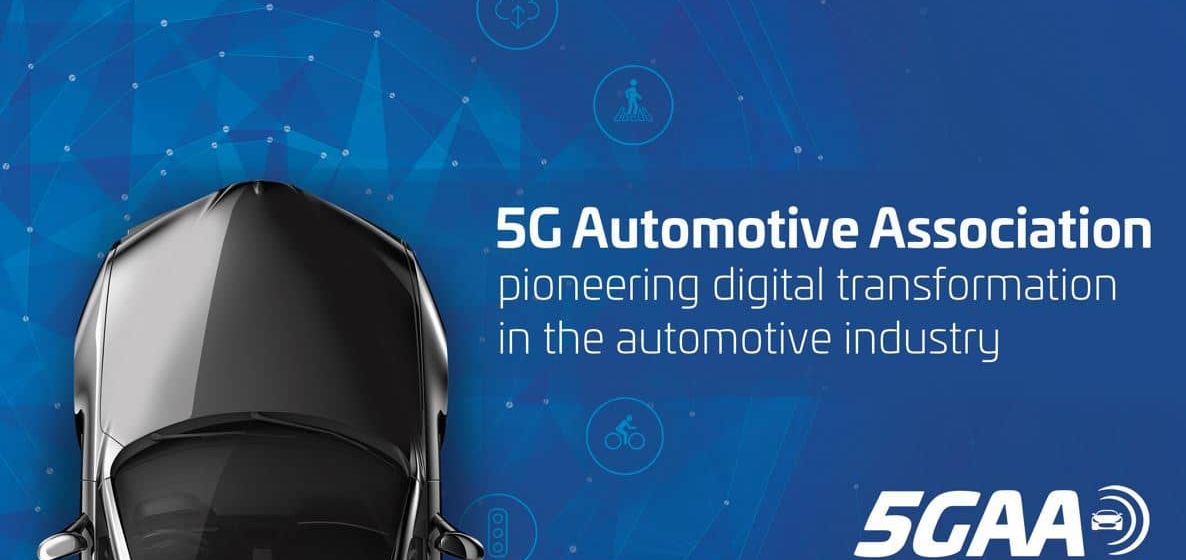
5GAA C-V2X Workshop and Demonstration – 10 July 2018 – Paris, France
SAVE THE DATE
5GAA C-V2X Workshop and Demonstration
10 July 2018
Paris, France
The 5G Automotive Association (5GAA) are pleased to announce our next Workshop and Demonstration with the support of PSA, Ford and BMW. to present and showcase Cellular-Vehicle-to-Everything (C-V2X) technology to European transport stakeholders including EU Member States Ministries, Road Traffic Authorities & Road Operators, as well as a wide array of interest groups and industry representatives.
With the support of UTAC-CERAM, this interactive Workshop and Demonstration is intended to advance the dialogue between automakers, technology providers, mobile network operators and the overall transportation community on the capabilities, timeline and deployment models for Cooperative Intelligent Transport Systems (C-ITS) in Europe.
This event will also showcase the most recent developments and deployment initiatives around C-V2X, paving the way towards 5G for the uptake of Cooperative, Connected and Automated Mobility (CCAM).
About 5GAA
The 5G Automotive Association (5GAA) is a global cross-industry organisation of companies from the automotive, technology and telecommunications industries (ICT), working together to develop end-to-end solutions for future mobility and transportation services.
Created in 2016, the Association is comprised of over 80 members whose mission is to develop, test and promote communications solutions, initiate their standardisation and accelerate their commercial availability and global market penetration, to address society’s connected mobility and road safety needs with applications such as automated driving, ubiquitous access to services and integration into smart city and intelligent transportation.



